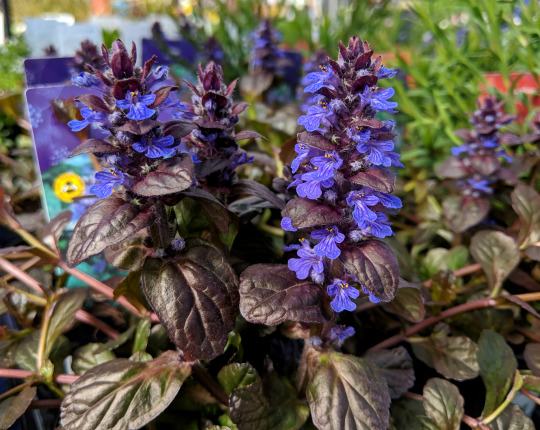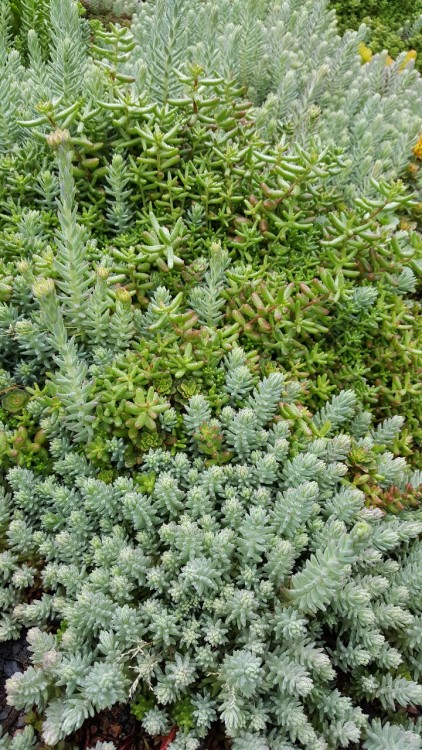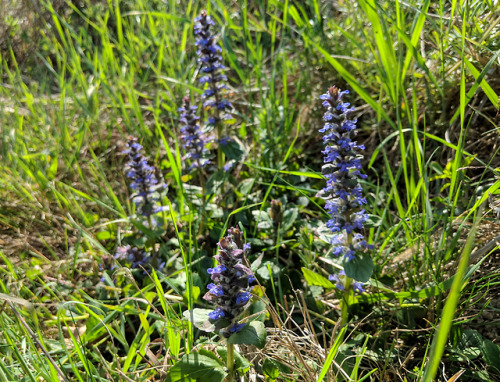#groundcover
Ajuga reptans, Lamiaceae
However common and widespread bugle might be across Europe and the British Isles, I don’t recall ever seeing it in the wild before finding three colonies on the edge of a field near my hometown in northern Italy, and I would remember because I just love its dense racemes of blue flowers. Due to its creeping habit and small leaves, it’s definitely easy to miss unless in bloom though.
It’s evergreen, forms a dense groundcover, flowers beautifully for a few months attracting wildlife and it’s extremely tolerant of full shade and moist ground, so I’ve lost count of the times I’ve invited customers to try it in difficult, dark spots where little else would thrive. Here below are a couple of common cultivars currently in bloom at the garden centre where I work:

A. reptans “Braunherz” has dark, purply foliage and stems which provide amazing contrast to the flowers. Seems to do well even with prolonged, hard frost and in full sun. I have some growing at my allotment and it’s just beginning to flower.

A. reptans “Burgungy Glow” has foliage variegated in cream and pink, with dark, bluish flower stems. Not as tolerant of the extremes, as often happens with variegated varieties. The flower spikes make me think of a picture to which the “invert” filter has been applied, as if the flowers should actually be yellow and the foliage bluish-green, but I’ll never complain about a blue flower!
Post link







